Abstract
A clear-cut triad of sequential Corynebacterium acnes transitional forms from disease has been discovered. This entity includes three major forms which are capable of stabilization in culture, the spherical, the intermediate, and the definitive C. acnes. During conversion or reversion among the three forms, a variety of forms with mixed characteristics was observed. The spherical form was gram-negative and osmotically fragile, but it possessed a vestigial cell wall and mesosomes which excluded it from the L forms. In lieu of the L-form designation, the term “transitional” was adopted for all forms leading up to the definitive C. acnes. Culture of the spherical form was successful only on Mycoplasma-type media. The intermediate form was gram-negative, had mixed spherical and filamentous morphology, and bore a striking resemblance to Streptobacillus moniliformis. Like the spherical form, it was nutritionally exacting. The definitive form of C. acnes was preceded by gram-positive transitional forms of C. acnes morphology. It lacked, however, the carbohydrases and proteinases of C. acnes and susceptibility to C. acnes bacteriophages. Reversion was often blocked at this stage. A series of blood cultures from a patient with endocarditis was studied. Postmortem stain sections of the heart-valve lesion included intracellular masses of gram-negative spherical organisms. Indirect fluorescent antibody staining of these masses was strongly positive with antiserum to the spherical form and weakly positive with antiserum to the intermediate form.
Full text
PDF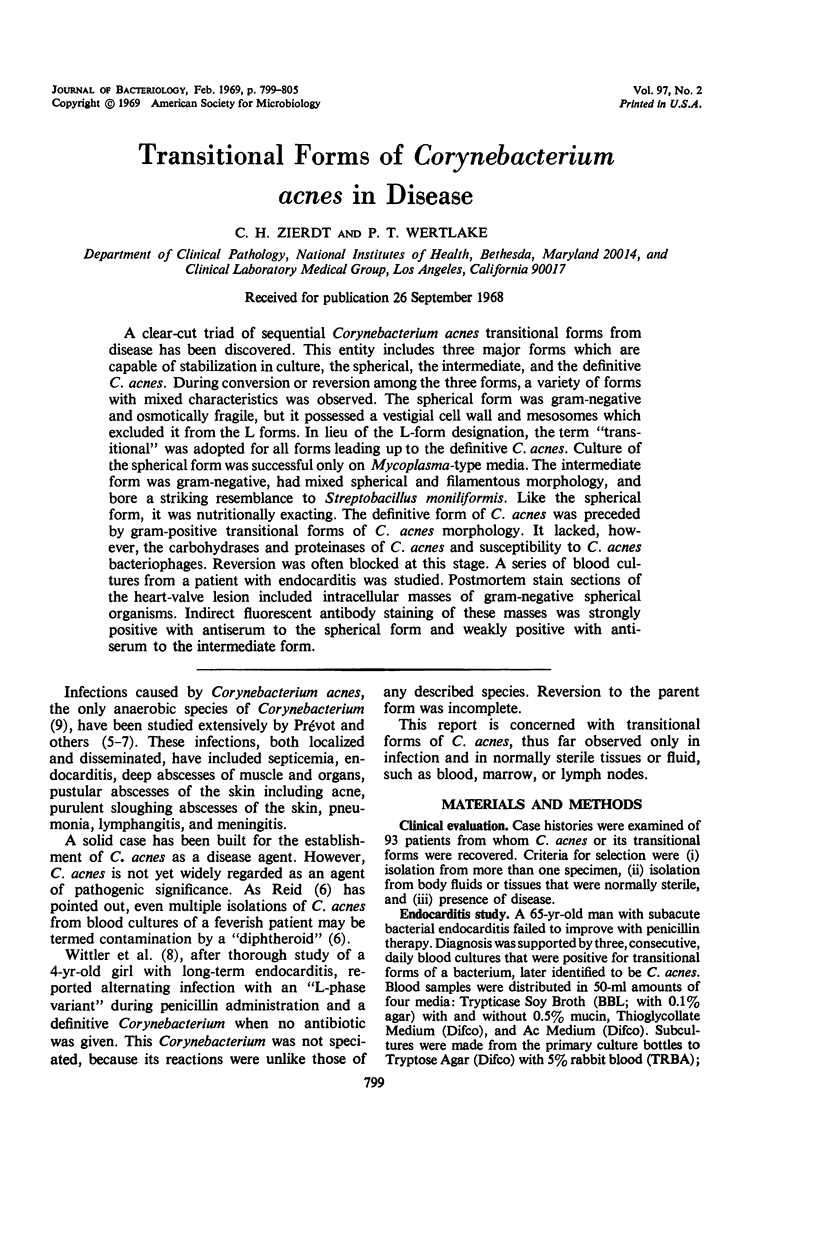
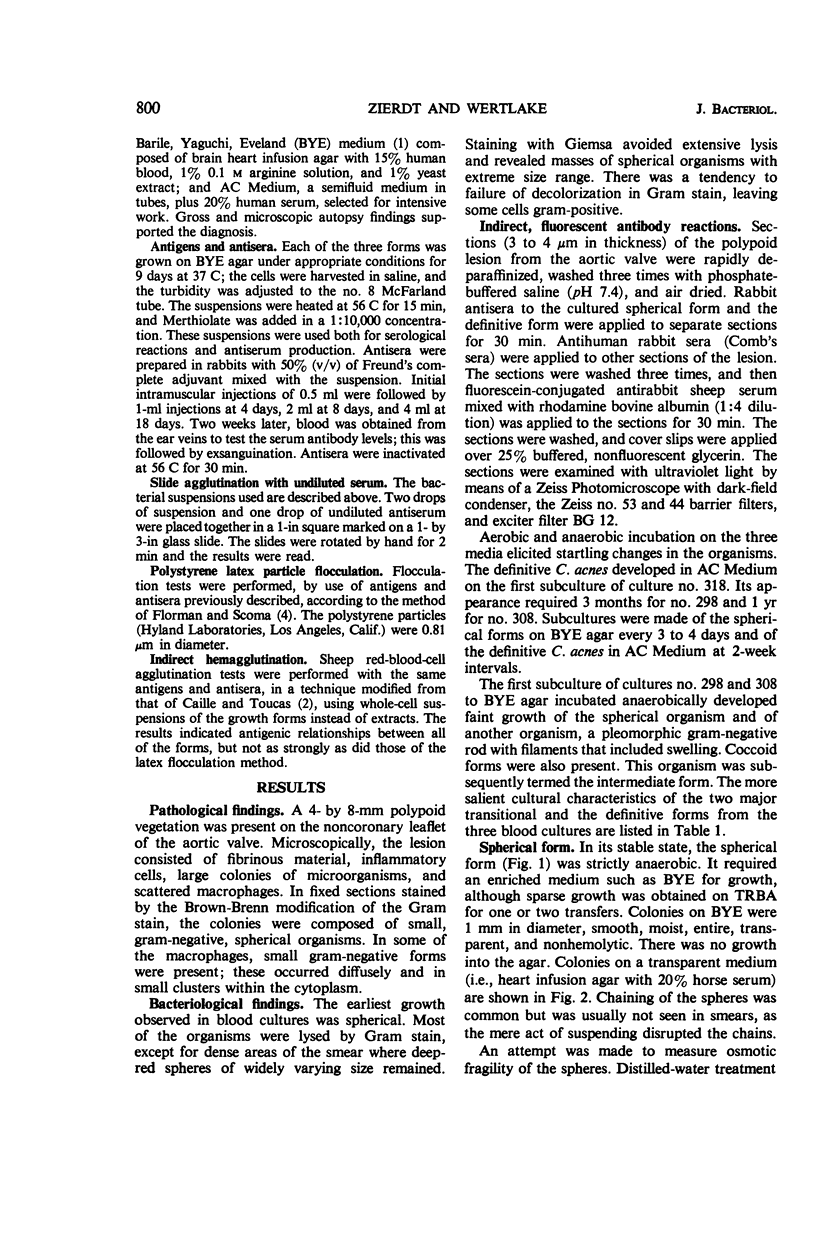
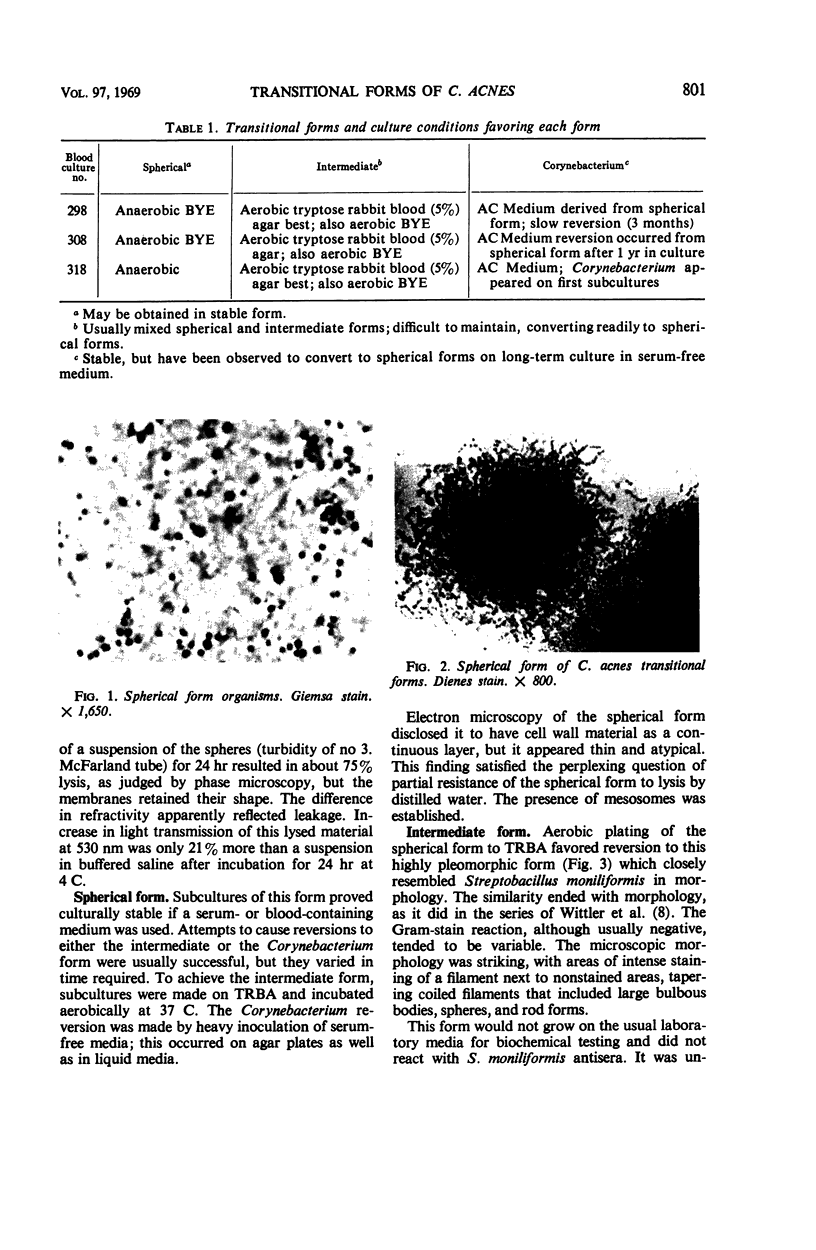
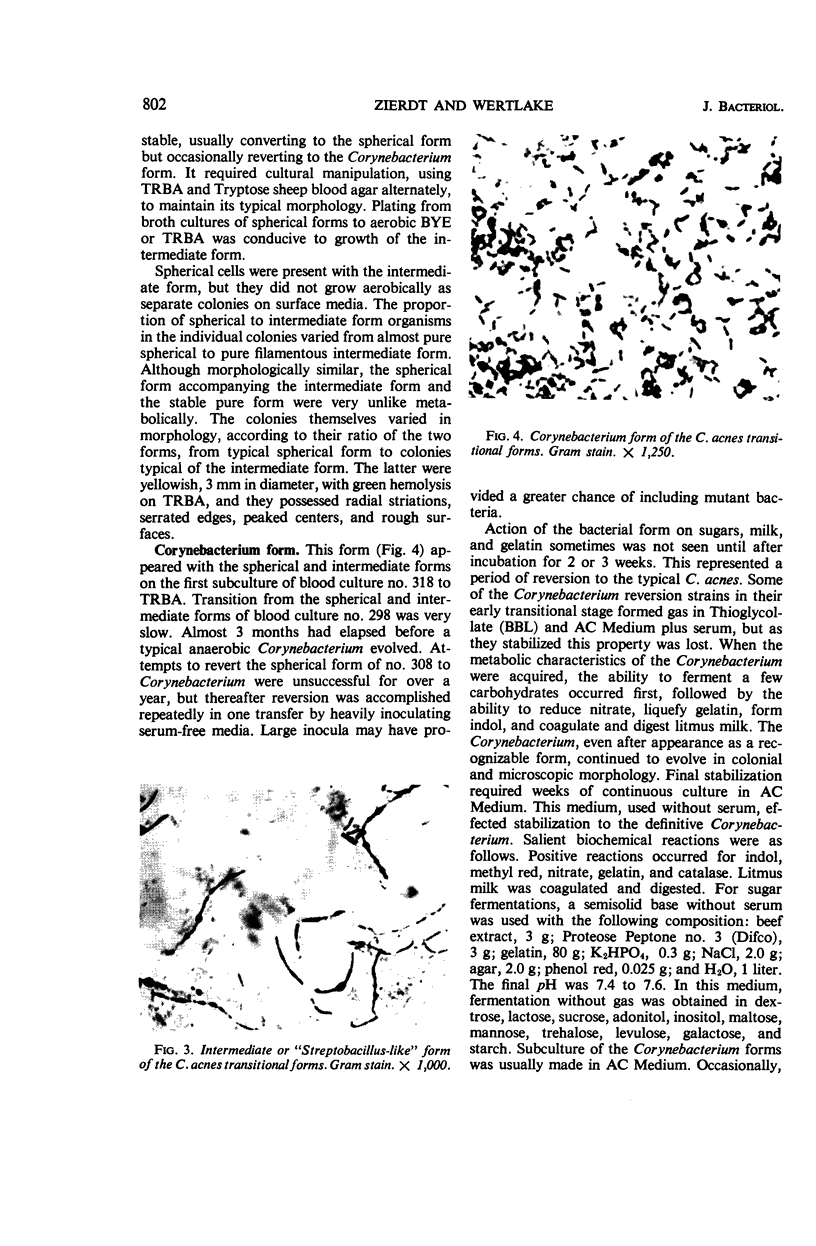
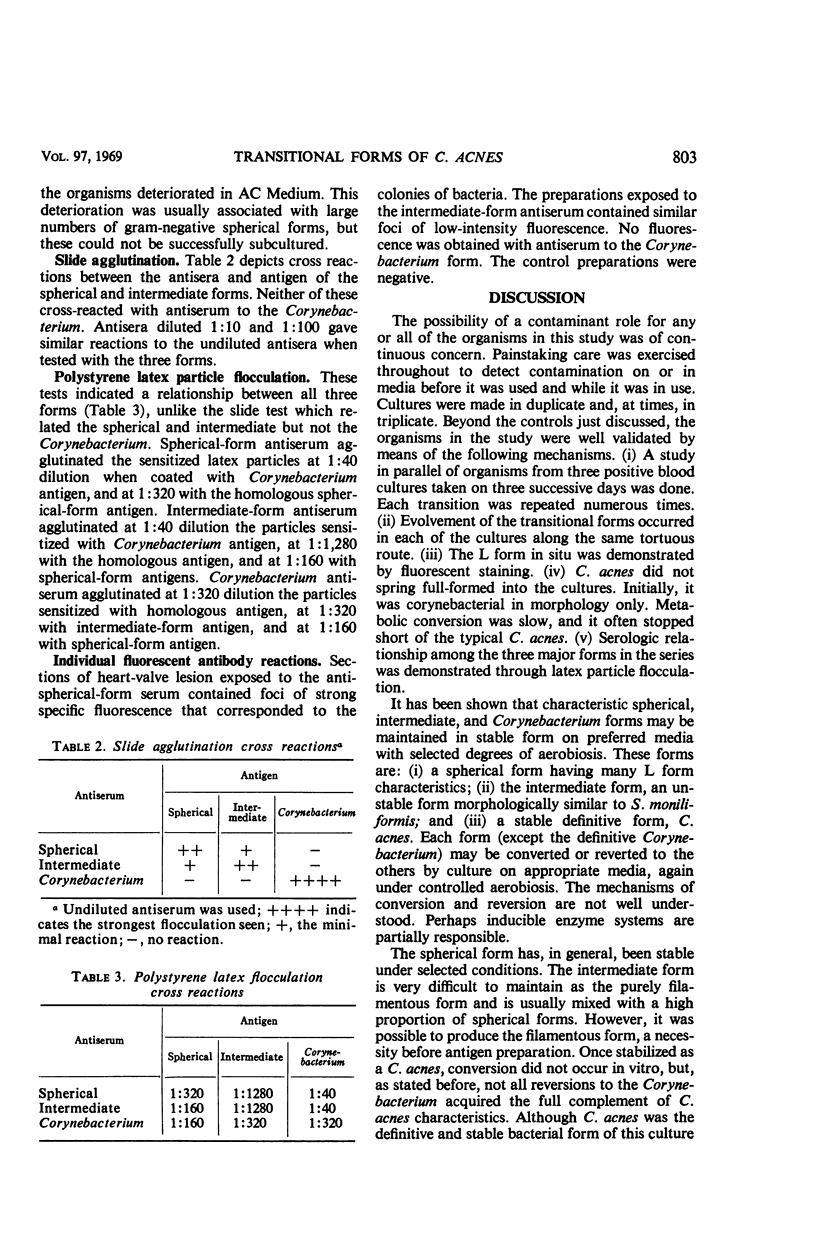


Images in this article
Selected References
These references are in PubMed. This may not be the complete list of references from this article.
- BARILE M. F., YAGUCHI R., EVELAND W. C. A simplified medium for the cultivation of pleuropneumonia-like organisms and the L-forms of bacteria. Am J Clin Pathol. 1958 Aug;30(2):171–176. doi: 10.1093/ajcp/30.2_ts.171. [DOI] [PubMed] [Google Scholar]
- CAILLE B., TOUCAS M. [Antigenic study of Corynebacterium acnes by the passive hemagglutination test. Antigens in common with other Corynebacteria]. Ann Inst Pasteur (Paris) 1960 Feb;98:276–281. [PubMed] [Google Scholar]
- Dienes L., Smith W. E. The Significance of Pleomorphism in Bacteroides Strains. J Bacteriol. 1944 Aug;48(2):125–153. doi: 10.1128/jb.48.2.125-153.1944. [DOI] [PMC free article] [PubMed] [Google Scholar]
- FLORMAN A. L., SCOMA J. L. A latex agglutination test for anaerobic diphtheroids. Proc Soc Exp Biol Med. 1960 Aug-Sep;104:683–685. doi: 10.3181/00379727-104-25951. [DOI] [PubMed] [Google Scholar]
- Reid J. D., Greenwood L. Corynebacterial endocarditis. A report of two cases with review. Arch Intern Med. 1967 Jan;119(1):106–110. doi: 10.1001/archinte.119.1.106. [DOI] [PubMed] [Google Scholar]
- SHEHADEH N. H., KLIGMAN A. M. THE BACTERIOLOGY OF ACNE. Arch Dermatol. 1963 Dec;88:829–831. doi: 10.1001/archderm.1963.01590240153025. [DOI] [PubMed] [Google Scholar]
- WITTLER R. G., MALIZIA W. F., KRAMER P. E., TUCKETT J. D., PRITCHARD H. N., BAKER H. J. Isolation of a Corynebacterium and its transitional forms from a case of subacute bacterial endocarditis treated with antibiotics. J Gen Microbiol. 1960 Oct;23:315–333. doi: 10.1099/00221287-23-2-315. [DOI] [PubMed] [Google Scholar]






